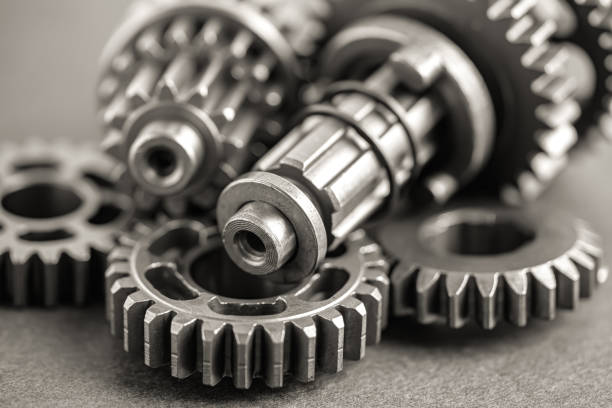Analysis of influencing factors of heat treatment of powder metallurgy materials
The pores generated in the sintering process of powder metallurgy materials are its inherent characteristics, which also has a great impact on heat treatment, especially the relationship between the change of porosity and heat treatment, in order to improve the density and crystal size, the alloying elements added also have a certain impact on heat treatment:

1. Influence of pores on heat treatment process
During heat treatment of powder metallurgy materials, rapid cooling inhibits the diffusion of austenite into other tissues, so as to obtain martensite, and the existence of pores has a great influence on the heat dissipation of materials. By the thermal conductivity formula:
Thermal conductivity = theoretical thermal conductivity of metal ×(1-2× porosity)/100
It can be seen that the hardenability decreases as the porosity increases. On the other hand, the pores also affect the density of the material, and the effect of the surface hardness and hardening depth of the material after heat treatment is related to the density effect, which reduces the surface hardness of the material. Moreover, because of the existence of pores, salt water can not be used as a medium during quenching, so as to avoid corrosion caused by salt residue, so the general heat treatment is carried out in a vacuum or gas medium.
2. The influence of porosity on the surface hardening depth during heat treatment
The heat treatment effect of powder metallurgy materials is related to the density of the material, permeability (quenching) permeability, thermal conductivity and resistivity, porosity is the biggest cause of these factors, when the porosity exceeds 8%, the gas will quickly penetrate through the void, in the carburizing hardening, increase the depth of carburizing, the surface hardening effect will be reduced. Moreover, if the infiltration rate of carburizing gas is too fast, it will produce soft points in quenching, reduce the surface hardness, and make the material brittle and deformed.
3. Influence of alloy content and type on powder metallurgy heat treatment
The common alloying elements are copper and nickel, and their content and type will affect the heat treatment effect. The hardening depth of heat treatment gradually increases with the increase of copper content and carbon content, and then gradually decreases when it reaches a certain content. The stiffness of nickel alloy is greater than that of copper alloy, but the inhomogeneity of nickel content will lead to uneven austenitic structure.
4. Influence of high temperature sintering
Although high temperature sintering can obtain the best alloying effect and promote densification, the difference in sintering temperature, especially at low temperatures, will lead to a decrease in the sensitivity of heat treatment (less alloy in the solid solution) and a decrease in mechanical properties. Therefore, the use of high temperature sintering, assisted by sufficient reducing atmosphere, can obtain better heat treatment results.
FOSHAN LAUNCH SINTER METALS CO.,LTD
Material: Mainly produce stainless steel base, iron base, copper base, copper and iron alloy base. Products: Gear, flange, G Bushing, positioning ring, rotor, counterweight, valve disc, VVT parts, clutch parts, oil pump parts, bearings.
Contact Number:+86 757-27780177
Address:No. 1-1 Maning Industrial Park, Xingtan, Shunde,Foshan,Guangdong, China
E-mail address:sales-7@launchpm.com
WhatsApp:+86 13760957591
SKYPE:live:.cid.5df4ff149cb5fdeb


